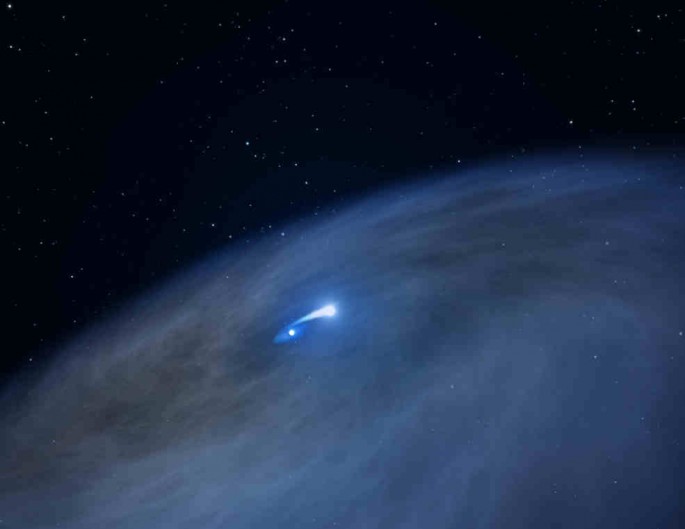Astronomers believe that they have discovered this extremely rare star that presents characteristics and behavior unlike any other star in the Milky Way galaxy where they gave it an equally unique nickname, Nasty 1.
The Nasty 1 or NaSt1 is apparently classified under Wolf-Rayet stars that astronomers consider to be highly dynamic and evolve numerous times which also possesses the the same mass as our sun.
These stars are quick to lose their thick layers of hydrogen that enshrouds the star, revealing the inner core of extremely bright and hot burning helium.
NaSt1 has been studied by scientists for quite some time now but this fascinating galactic object apparently does not apply to the normal classification of a Wolf-Rayet star according to the Hubble Space Telescope team.
Scientists were expecting to observe twin gas lobes from opposites ends of the star which is common for Wolf-Rayet behavior, however, they detected a nebula gas spanning almost 2 trillion miles that is shaped like a pancake, enshrouding the whole star.
This stellar disk is probably caused by its companion star that is currently devouring the outermost layer of NaSt1 where researchers suggest that this nebula could be a brief transition into its rapid evolution.
According to lead author of the study Jon Mauerhan of the University of California, Berkeley, this disk structure is exciting to see from the Wolf-Rayet star since it suggests evidence of the star forming from a binary interaction.
This phase is also a brief transition where this is one of the few examples found in the galaxy that spans only 100,000 years where the disk formation can only become visible for less than 10,000 years.
Scientists have argued about how a Wolf-Rayet star comes to life where one theory suggests that these stars consume a massive amount of hydrogen where the outermost hydrogen layers become weaker and prone to gravitational stripping or stellar cannibalism by another companion star.
Another theory suggests that this stellar disk formation is caused by this massive star getting blown away by extremely powerful solar winds that consist of highly charged streaming particles.
However, scientists believe that models involving binary interaction from a companion star have presented that 70 percent of Wolf-Rayet stars are also members of double star systems.
According to Nathan Smith of the University of Arizona, this mass exchange during binary systems are vital to Wolf-Rayet stars including the supernovae they generate. This short lived phase is also critical in understanding this process.
This study is published in the Monthly Notices of the Royal Astronomical Society.




























